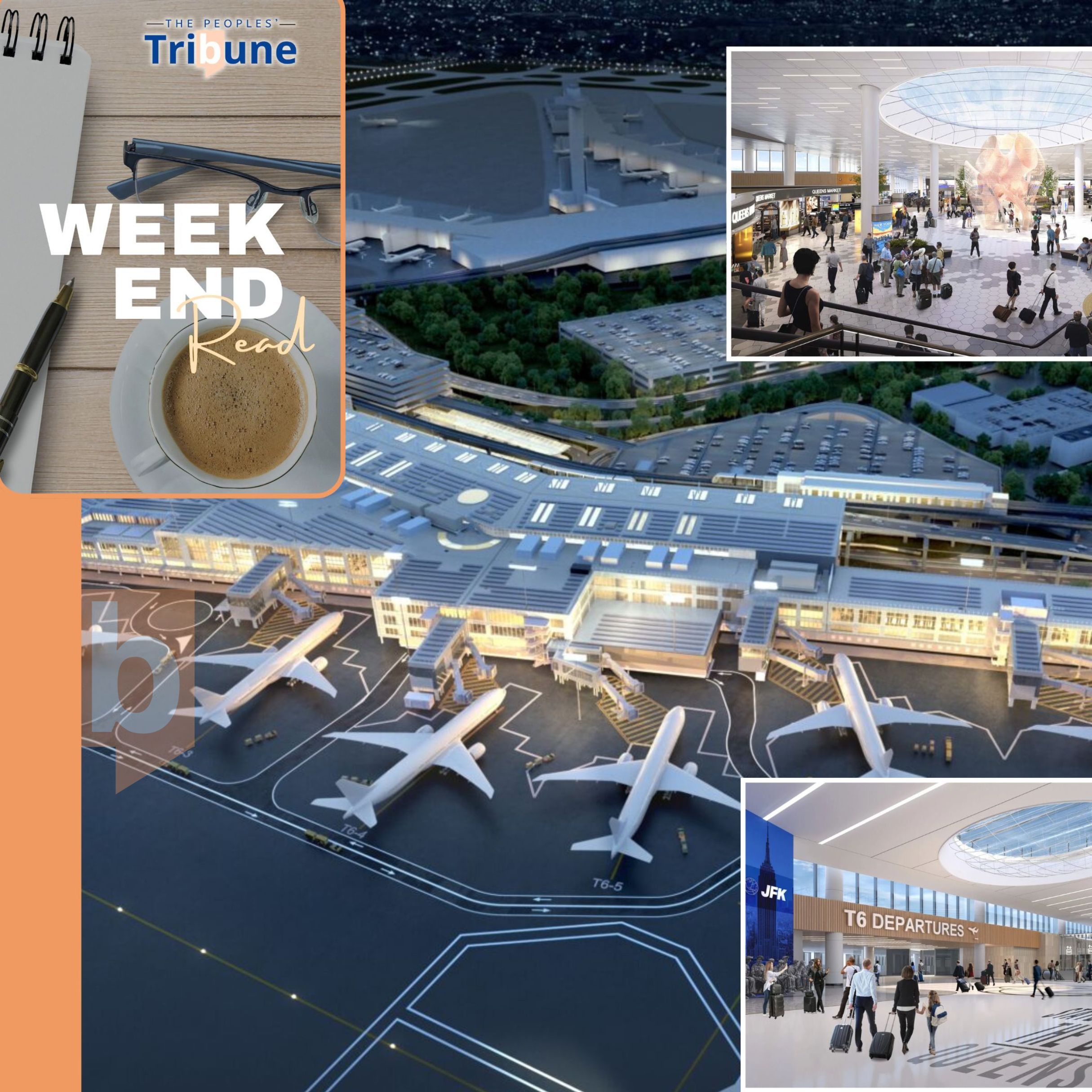A New Gateway for New York: Inside JFK’s Terminal 6

NEW YORK--New York’s John F. Kennedy International Airport is in the middle of its largest transformation in decades, a sweeping $19 billion redevelopment project that aims to modernize one of the world’s busiest airports. At the heart of that effort is the new Terminal 6, a 1.2 million-square-foot facility that is being hailed as both a technological marvel and a cultural showcase. The project broke ground in 2023 and will open in phases starting in 2026, with full completion expected by 2028.
A Bold Vision and a Major Investment
Terminal 6 is being developed under a public-private partnership between the Port Authority of New York and New Jersey and JFK Millennium Partners, a consortium led by Vantage Airport Group and supported by American Triple I, RXR Realty, and JetBlue. The consortium has experience delivering world-class terminals, including the award-winning Terminal B at LaGuardia Airport.
The $4.2 billion investment in Terminal 6 reflects New York’s ambition to reestablish JFK as a global leader in passenger experience. Construction has already created thousands of jobs, with an estimated 4,000 positions expected during the life of the project, including nearly 2,000 unionized roles. For the region, that represents not only an infrastructure upgrade but also a significant economic boost.
The building is designed to roll out in two stages. Six gates, including those capable of handling wide-body aircraft, will open in 2026. The final phase, with four more gates, will follow by 2028. Once complete, the terminal will feature ten gates, nine of them able to accommodate long-haul aircraft, making it one of the most versatile facilities at JFK.
A Terminal Designed for the Future
What sets Terminal 6 apart is its focus on blending efficiency, sustainability, and cultural richness. Travelers will notice expansive floor-to-ceiling windows, airy open spaces, and abundant natural light. High ceilings and modern architecture are designed not just for aesthetics, but also to make wayfinding intuitive and stress-free.
Digital innovation will be central. The terminal will feature biometric bag drop and check-in stations, streamlined security, and automated baggage handling systems. Designers anticipate that the walk from TSA screening to gate could be reduced to just five minutes, radically simplifying one of the most stressful parts of air travel.
The departures level will offer one of the longest curbsides at JFK, giving airlines branded zones for drop-off and improving traffic flow. The terminal will also host advanced customs and border protection facilities, new lounges, and dedicated spaces for premium travelers.
A Showcase of Culture and Creativity
Perhaps the most distinctive element of Terminal 6 is its embrace of New York’s cultural life. Airport officials have partnered with some of the city’s most iconic institutions, including the Metropolitan Museum of Art, MoMA, the American Museum of Natural History, and Lincoln Center, to curate permanent installations within the terminal.
Travelers arriving in New York will be greeted by large-scale art, murals, and immersive exhibits that reflect the city’s identity. A centerpiece of the design is a dramatic oculus skylight over the central concourse, which floods the retail and dining areas with natural light. Public art displays and performance-inspired installations will remind passengers that they are not just in an airport, but in the gateway to one of the world’s great cultural capitals.
Airlines and Connectivity
Several major airlines are already preparing to move into Terminal 6. Lufthansa Group carriers—including Lufthansa, SWISS, Austrian Airlines, and Brussels Airlines—will anchor operations there, bringing strong connectivity to Europe. Other international carriers such as Condor and Cathay Pacific have also announced plans to operate from the terminal. JetBlue, which is based at neighboring Terminal 5, will benefit from shared infrastructure, with the two terminals connected by a common ground transport center and seamless integration to the AirTrain.
In addition to offering expanded airline options, Terminal 6 is being designed to support the operational needs of modern fleets, with the ability to serve next-generation wide-body aircraft.
Commitment to Sustainability
Sustainability is a defining principle of the new facility. Terminal 6 is being constructed with eco-conscious materials and designed to meet high efficiency standards. Energy-saving features, water conservation systems, and rooftop solar arrays will help reduce its environmental footprint. Developers are pursuing multiple certifications, including LEED and other recognized benchmarks for sustainable construction.
An Economic and Passenger Experience Milestone
The redevelopment of JFK, and Terminal 6 in particular, is about more than infrastructure. It is a statement about the role of airports as economic engines and cultural gateways. Once complete, the terminal will feature more than 100,000 square feet of shops, restaurants, and services inspired by New York’s diverse neighborhoods. Dining options will range from local favorites to upscale concepts, while retail will include global brands alongside independent New York labels.
The vision is to turn the airport into a destination in its own right, where travelers can enjoy a last taste of New York before departure or a first taste upon arrival. Combined with its operational improvements and cultural flourishes, Terminal 6 is set to become not just a transit point but a defining experience.
With its phased opening just a year away, anticipation is building. The enclosure of the main terminal structure has already been completed, and signature architectural features like the skylight are in place. The next milestones will involve interior fit-outs, technology installation, and tenant preparation.
For New York, Terminal 6 represents a forward-looking investment in infrastructure that blends efficiency, design, and culture. For travelers, it promises a radically improved gateway that could change the way people think about JFK.
As the world’s airlines compete to capture premium travelers and as global cities invest in signature airports to signal their relevance, Terminal 6 is New York’s answer. It is not just a new terminal; it is a new standard for what an airport can be — a place where commerce, culture, and connectivity converge.

